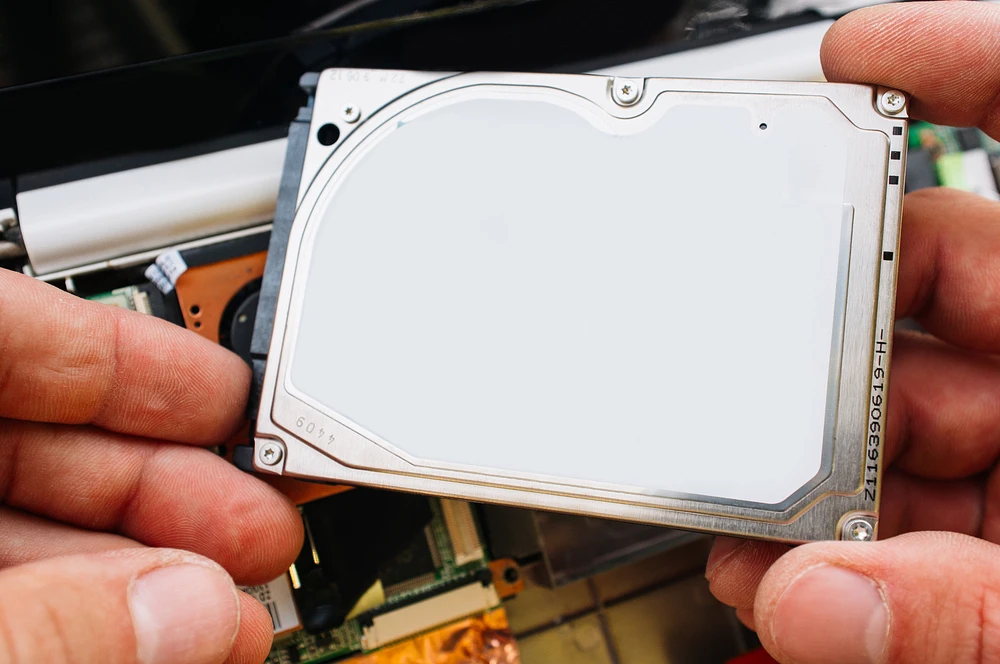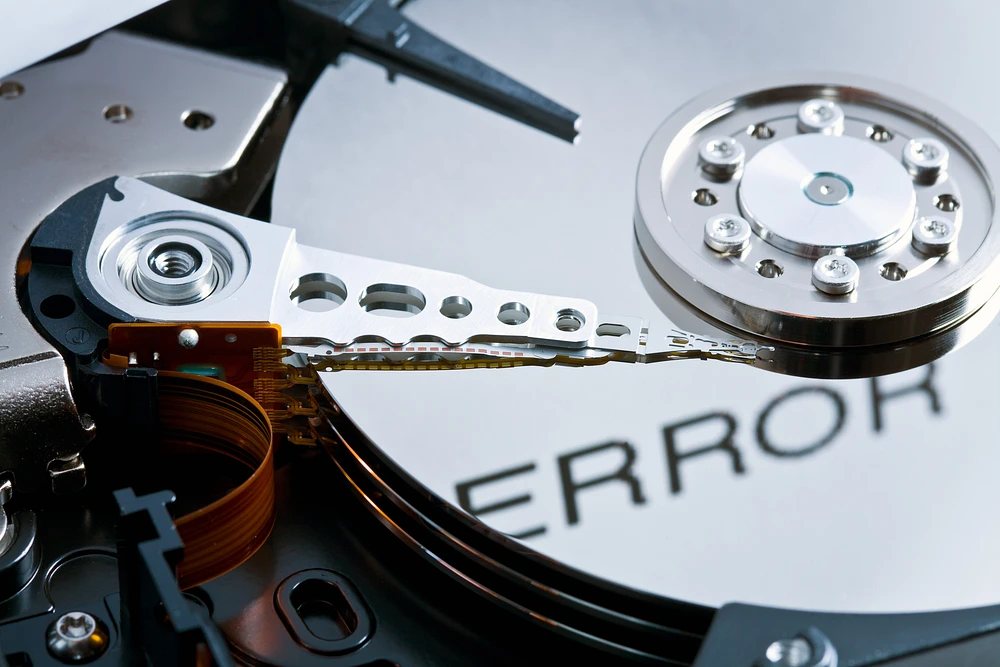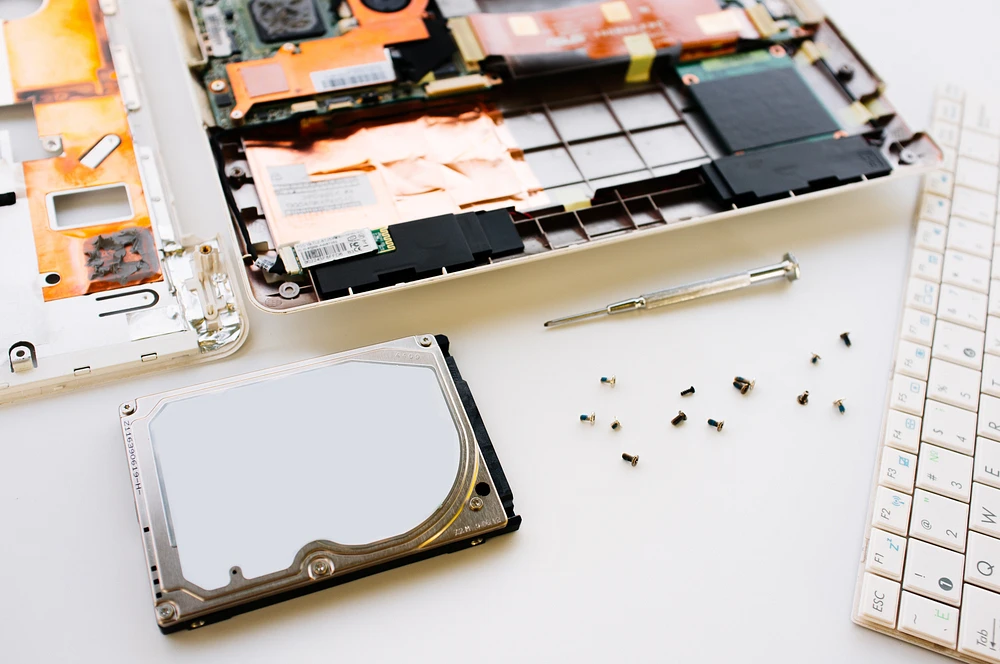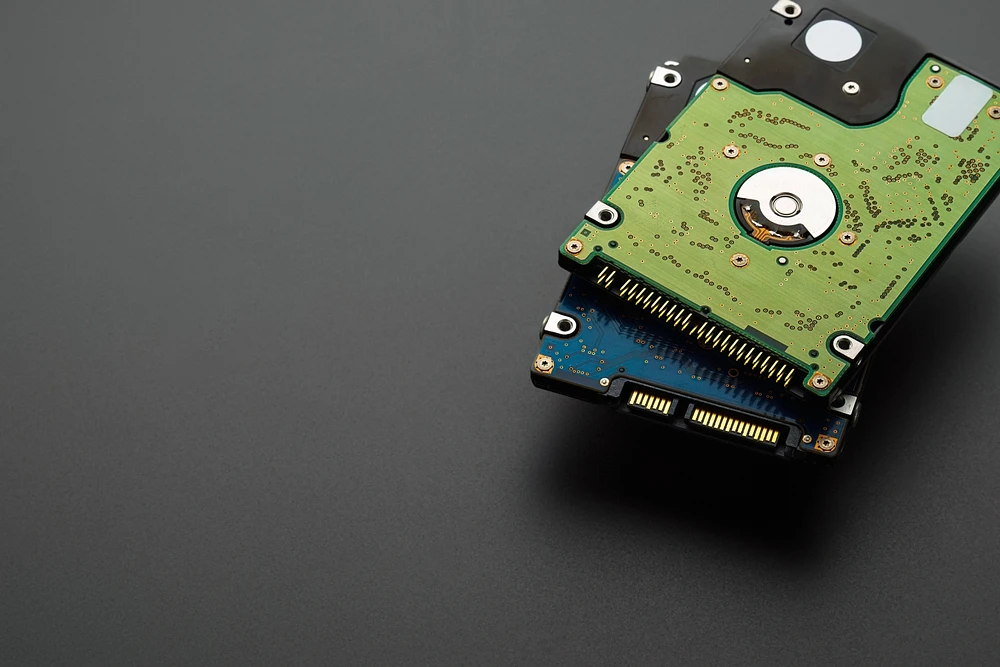TL;DR
- Stop using the affected drive immediately to prevent overwriting recoverable data
- DIY data recovery software works best for logical failures like accidental deletion or formatting (costs $50-150)
- Professional data recovery services are necessary for physical damage or complex failures ($300-3000+)
- Success rates vary dramatically: 95%+ for simple deletions, 60-80% for physical damage
- Free recovery software exists but has significant limitations compared to paid options
- SSD data recovery is more challenging than traditional hard drive recovery due to TRIM commands
- Prevention through backups using the 3-2-1 rule is always cheaper than recovery
First Steps: What to Do Immediately After Data Loss
Stop Using the Drive Immediately
Every action on a failed drive reduces recovery chances. When files get deleted, they're not actually erased - the space just gets marked as available for new data. Keep using the drive, and new files will overwrite your old ones permanently.
Power down the computer if possible. If you must use it, avoid installing recovery software on the same drive where you lost data.
Identify the Type of Data Loss Incident
Understanding what happened helps determine your next steps:
- Accidental deletion - Files moved to trash or deleted permanently
- Formatting - Drive was formatted or repartitioned
- Corruption - Files became inaccessible due to software issues
- Physical damage - Drive makes clicking sounds, won't spin up, or suffered impact
- System crashes - Computer won't boot or blue screens frequently
Assess the Physical State of the Drive
Listen carefully to your drive. Healthy drives operate almost silently. Warning signs include:
- Clicking, grinding, or beeping sounds
- Drive not recognized by computer
- Extremely slow performance
- Burning smells or visible damage
Physical symptoms usually mean professional help is needed.
Understanding the Enemy: Common Causes of Drive Failure

Logical Failures (The "Software" Problem)
Logical failures affect data structure without physical damage. Common causes include virus attacks, accidental formatting, power surges, and software corruption. These scenarios often allow DIY recovery since the drive mechanism still works properly.
File system corruption happens when the drive's organizational structure breaks down. Your files exist physically, but the computer can't find them. Recovery software excels at rebuilding these connections.
Physical Failures (The "Hardware" Problem)
Physical damage affects drive components. Head crashes occur when read/write heads contact disk surfaces, potentially causing permanent data loss. Motor failures prevent drives from spinning, while electronic component failures can kill the entire drive.
These situations require specialized equipment and cleanroom environments. Attempting DIY recovery often makes things worse.
The Unique Challenge of SSD Data Recovery
SSDs present special challenges for data recovery. They use TRIM commands to immediately erase deleted data for performance optimization. This means traditional recovery methods have much lower success rates.
Additionally, SSDs spread data across multiple memory chips through wear leveling. When an SSD fails, the damage often affects multiple storage locations simultaneously.
DIY Route: Data Recovery Software

When is Data Recovery Software a Good Option?
Recovery software works best for logical failures. Consider this approach when:
- Drive still functions normally (no physical damage)
- You accidentally deleted files or formatted a drive
- File system corruption prevents access to data
- You have some technical comfort level
- Cost is a major concern
Software recovery typically costs $50-150 compared to hundreds or thousands for professional services.
How Data Recovery Software Works
Recovery programs scan drive sectors looking for file signatures and data patterns. They rebuild file allocation tables and recover data from unallocated space. Deep scan modes examine every sector, though this process can take many hours.
Most software offers preview features so you can verify files before purchasing. This helps avoid buying software that can't recover your specific data.
Top Data Recovery Software Options (An Overview)
Several reliable options exist in the market:
- R-Studio - Professional-grade tool with excellent technical capabilities
- PhotoRec - Free, open-source option that works across multiple platforms
- Disk Drill - User-friendly interface with good preview features
- Recuva - Free basic option from CCleaner makers
Each program has strengths and weaknesses. Research reviews specific to your situation before purchasing.
A Step-by-Step Guide to Using Recovery Software
Start by downloading software to a different drive than the one containing lost data. Create a bootable recovery disk if your system won't start normally.
Run the software and select your affected drive for scanning. Quick scans find recently deleted files, while deep scans take longer but find more data. Review preview results carefully - corrupted files may appear recovered but won't open properly.
Save recovered files to a different drive to avoid overwriting other recoverable data. Never save recovered files back to the original location.
Limitations and Risks of the DIY Approach
Software recovery has significant limitations. It cannot fix physical damage and may struggle with complex file system corruption. Success rates decrease dramatically if data has been overwritten.
Running recovery software on physically damaged drives can cause additional harm. The repeated read attempts might push a failing drive completely beyond repair.
Professional Route: Data Recovery Services

When Do You Need a Professional Data Recovery Service?
Professional help becomes necessary when software approaches fail or physical damage exists. Signs you need professional service include:
- Drive makes unusual noises or won't power on
- Multiple failed DIY recovery attempts
- Critical business data with high value
- Complex RAID configurations
- Drives exposed to fire, water, or physical impact
What Does the Professional Data Recovery Process Look Like?
Professional recovery starts with evaluation and diagnosis. Technicians examine drives in cleanroom environments to assess damage severity. They provide quotes based on complexity and required work.
Recovery involves creating sector-by-sector copies of damaged drives using specialized hardware. Technicians then work on copies to avoid further damage to originals. Complex cases may require rebuilding drives with matching components.
How to Choose a Reputable Data Recovery Company
Research company credentials and certifications. Look for ISO certifications and Better Business Bureau ratings. Read customer reviews focusing on similar data loss scenarios.
Ask about their cleanroom facilities and security procedures. Reputable companies provide detailed quotes and explain their processes clearly. Avoid companies that guarantee 100% success rates - honest professionals acknowledge that some data loss is permanent.
Prevention is Better Than Cure: Backing Up Your Data
The 3-2-1 Backup Rule
Smart backup strategy follows the 3-2-1 rule: keep three copies of important data, store them on two different media types, and keep one copy offsite. This approach protects against multiple failure scenarios simultaneously.
Regular testing ensures backups work when needed. Many backup failures only get discovered during recovery attempts.
Best Backup Solutions for Home Users
Cloud storage services like Google Drive or Dropbox offer convenient automatic backup for most users. External hard drives provide local backup for large files or limited internet connections.
Automated backup software eliminates human error from the process. Set schedules to run backups during off-hours to avoid performance impacts.
Best Backup Solutions for Businesses
Businesses need more robust solutions including network attached storage (NAS) and enterprise cloud services. RAID configurations provide redundancy for critical systems.
Professional backup services offer monitoring, testing, and disaster recovery planning. The costs pale compared to potential business disruption from major data loss.
Frequently Asked Questions (FAQ)
Can I recover data from a hard drive that won't power on?
Professional recovery services can often recover data from drives that won't power on. Problems might involve power supply circuits rather than storage components. However, success rates depend on what specifically failed.
How long does the data recovery process usually take?
Timeframes vary significantly based on damage complexity. Simple logical recoveries might complete in 2-3 days, while complex physical recoveries can take 2-3 weeks. Emergency services offer faster turnaround for premium pricing.
Is it possible to recover overwritten data?
Overwritten data recovery success depends on how much new data was written. Recently overwritten files have better recovery chances than heavily overwritten drives. SSDs make overwritten data recovery particularly challenging due to TRIM commands.
What is the success rate of professional data recovery?
Success rates vary by failure type. Logical failures achieve 90-95% success rates, while physical damage recoveries range from 60-80%. Complete drive destruction or extensive overwriting significantly reduces success chances.
Are there any free data recovery software options that actually work?
Yes, several free options provide basic recovery capabilities. PhotoRec and TestDisk offer powerful features for technical users. However, free software typically has limitations compared to paid alternatives in terms of file types supported and user interface quality.
Can data be recovered from a formatted drive?
Formatted drives often retain recoverable data, especially if formatting was recent. Quick formats only clear file allocation tables while leaving actual data intact. Full formats overwrite more data but may still leave recoverable fragments.
How does SSD data recovery differ from traditional HDD recovery?
SSD recovery faces unique challenges including TRIM commands that immediately erase deleted data and wear leveling that spreads files across multiple memory chips. Recovery success rates are generally lower for SSDs, and specialized techniques are required.
What should I look for in a data recovery service quote?
Quality quotes should specify exactly what services are included, estimated timeframes, and detailed pricing breakdown. Look for transparency about success rate estimates and clear explanations of "no recovery, no fee" policies. Avoid companies that provide quotes without examining your drive first.












